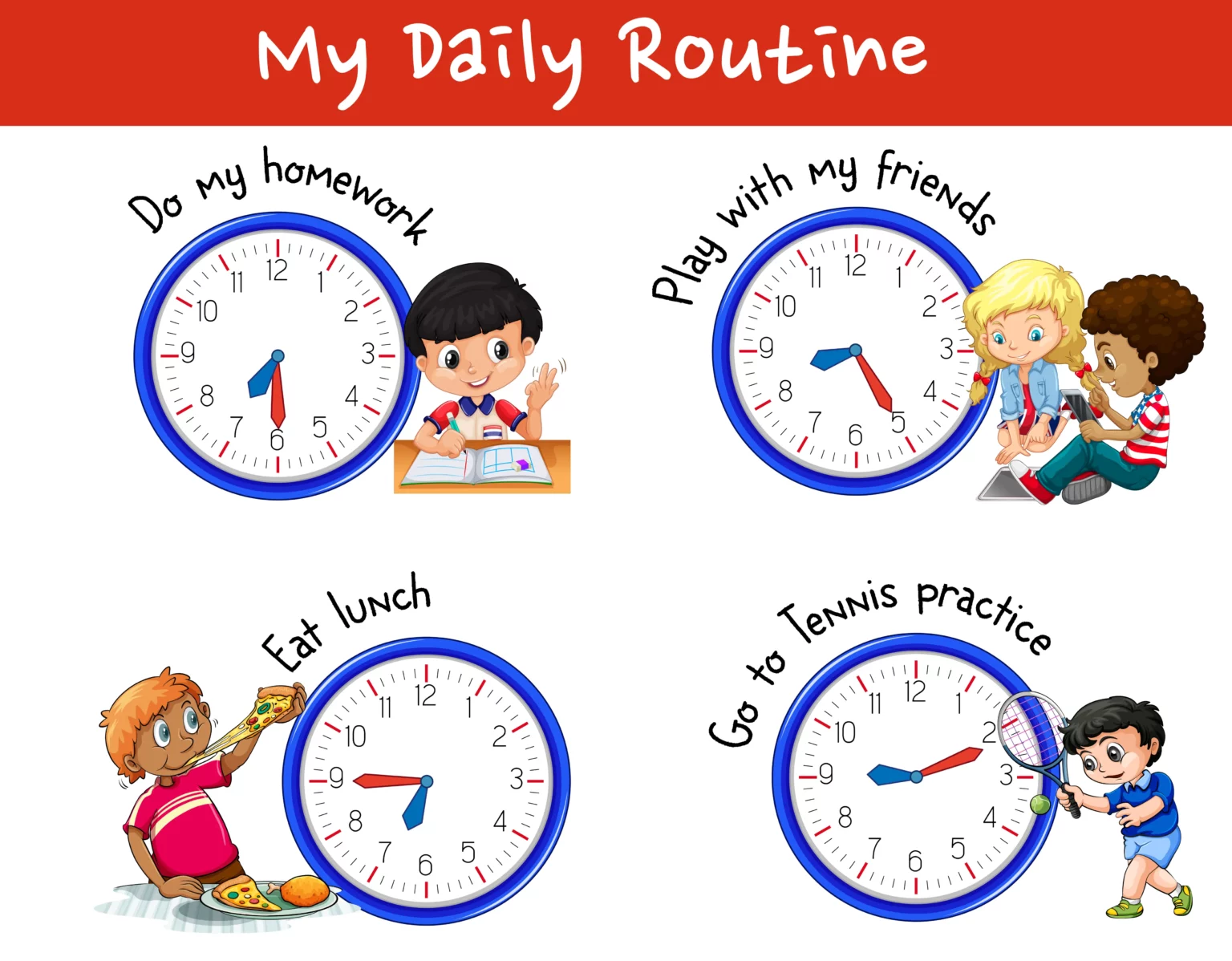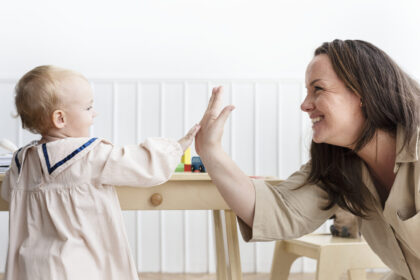Imagine this: It's morning, and your child with ADHD is racing around like a tornado, unable to find their shoes while simultaneously trying to eat breakfast and pack their backpack. Sound familiar? Many parents of children with ADHD face similar struggles every day. But what if there was a way to transform these chaotic mornings into calmer, more organized experiences? The answer lies in the power of routines.
Understanding ADHD in Children
Attention-deficit/hyperactivity disorder (ADHD) is a neurodevelopmental disorder that affects children and adolescents. It is characterized by ongoing symptoms of inattention, hyperactivity, and impulsivity. These symptoms can have a significant impact on a child's life, affecting their ability to learn, socialize, and function effectively at home and in school.
Children with ADHD may experience challenges with:
Inattention:
This includes difficulty paying attention to details, making careless mistakes, struggling to stay focused on tasks or conversations, appearing not to listen when spoken to directly, having trouble following instructions and finishing tasks, being easily distracted, and being forgetful in daily activities.
Hyperactivity:
This can manifest as excessive fidgeting, squirming, difficulty remaining seated when expected, running or climbing excessively in inappropriate situations, difficulty engaging in quiet activities, talking excessively, and constantly being “on the go”.
Impulsivity:
This involves blurting out answers before questions are completed, difficulty waiting their turn, interrupting conversations or games, and acting without thinking.
It's important to remember that all children may exhibit these behaviors at times. However, for children with ADHD, these challenges are more frequent, more severe, and interfere with their daily lives. Furthermore, children with ADHD may struggle with “time blindness,” which makes it difficult for them to understand the concept of time and manage their time effectively.
The Impact of Routines on Kids with ADHD
Routines provide a sense of predictability and structure that can be incredibly beneficial for children with ADHD. They create a framework for the day, helping children understand what to expect and when. This predictability can reduce anxiety and stress, allowing children to feel more in control of their environment and their ability to succeed. In essence, routines act as external organizers, providing support for executive function skills that are often challenging for children with ADHD, such as planning, organization, and task completion.
Studies have found a strong link between structured routines and positive outcomes for children with ADHD. Some of the key benefits include:
- Reduced Anxiety and Stress: When children know what to expect, they are less likely to feel anxious or overwhelmed by the demands of daily life. This can lead to fewer meltdowns, less frustration, and improved behavior overall.
- Improved Focus and Attention: Routines help children stay on track and concentrate on tasks by providing clear expectations and structured time for activities. This can be particularly helpful during homework time, which can be a major challenge for children with ADHD.
- Enhanced Time Management: Regular routines teach children to manage their time more effectively, making transitions between activities smoother. This can help reduce the stress and chaos often associated with mornings, after-school activities, and bedtime.
- Increased Independence: As children become more familiar with their routines, they can start to follow them with less prompting, fostering a sense of independence and self-reliance. This can be a major boost to their self-esteem and confidence.
- Improved Academic Performance and Self-Confidence: Studies have linked structured routines to improved academic performance and increased self-confidence in children with ADHD. By providing a framework for learning and completing tasks, routines can help children succeed in school and feel more confident in their abilities.
- Coping with Stress and Anxiety: Evidence suggests that adhering to a routine can also help children with ADHD cope with stress and anxiety. The predictability and structure of routines can provide a sense of stability and security, making it easier for children to manage challenging emotions.
Practical Tips for Creating and Implementing Routines
Creating effective routines for children with ADHD requires a thoughtful and structured approach. Here are some practical tips to get you started:
- Start Small: Begin with one or two key routines, such as a morning routine or a bedtime routine. Once your child is comfortable with these, gradually add more. You can start by targeting problem areas, such as mornings or homework time.
- Be Consistent: Consistency is crucial. Stick to the routine as much as possible, even on weekends. This helps reinforce the routine and makes it a natural part of your child's day. However, it's also important to be flexible. Life happens, and sometimes routines will need to be adjusted. Be prepared to adapt the routine based on your child's needs, energy levels, and unexpected events.
- Use Visual Aids: Visual schedules or charts can be incredibly helpful, especially for younger children. Use pictures, words, or symbols to outline each step of the routine. Place the schedule in a visible location where your child can easily refer to it throughout the day.
- Incorporate Breaks: Children with ADHD often need breaks to recharge and release energy. Include short breaks between tasks or after periods of focused work. Be mindful of your child's energy levels and adjust the routine accordingly, incorporating more frequent breaks or shifting demanding tasks to times when they have more energy.
- Create a Reward System: Positive reinforcement can be a great motivator. Use a reward system to encourage your child to follow their routine. This could be as simple as stickers on a chart or earning extra playtime.
- Involve Your Child: Let your child have a say in their routine. This gives them a sense of ownership and makes them more likely to stick to it.
- Use Timers: Timers can help children with ADHD visualize time and stay on track. Use them to signal the start and end of activities, such as homework time or playtime.
- Set Clear Expectations: Clearly define tasks and expectations for each part of the day. For example, during homework time, explain what needs to be completed and how long they should focus. Break down larger tasks into smaller, more manageable steps to prevent overwhelm and keep your child on track.
- Incorporate Physical Activity: Physical activity can help reduce hyperactivity and improve focus. Include time for outdoor play or active indoor activities in your child's routine. This could involve a quick walk, jumping jacks, stretching, or a dance session.
Examples of Effective Routines
Here are some examples of effective routines for children with ADHD, presented in table format for easy reference:
Morning Routine:
| Time | Activity | Benefit |
|---|---|---|
| 7:00 AM | Wake up at the same time each day. | Provides consistency and predictability. |
| 7:15 AM | Use the bathroom and brush teeth. | Establishes healthy habits. |
| 7:30 AM | Get dressed. | Laying out clothes the night before can reduce morning stress and save time. |
| 7:45 AM | Eat a nutritious breakfast. | Provides energy for the day. |
| 8:00 AM | Gather school belongings. | Having a designated spot for backpacks and other essentials can help with organization and reduce forgetfulness. |
| 8:15 AM | Review the day's schedule. | Helps the child mentally prepare for the day and know what to expect. |
After-School Routine:
| Time | Activity | Benefit |
|---|---|---|
| 3:30 PM | Have a healthy snack. | Refuels energy after school. |
| 3:45 PM | Unpack backpack and put belongings away. | Encourages organization and responsibility. |
| 4:00 PM | Complete homework. | Having a consistent start time for homework can improve productivity and reduce procrastination. |
| 5:00 PM | Engage in physical activity. | Provides an outlet for excess energy and can improve focus. |
| 5:30 PM | Have free time or participate in extracurricular activities. | Allows for relaxation and exploration of interests. |
Bedtime Routine:
| Time | Activity | Benefit |
|---|---|---|
| 8:00 PM | Set a timer for how many minutes until bedtime. | Helps the child visualize the transition to bedtime. |
| 8:15 PM | Engage in calming activities, such as reading or taking a bath. | Promotes relaxation and reduces anxiety. |
| 8:30 PM | Change into pajamas. | Signals the transition to sleep. |
| 8:45 PM | Brush teeth. | Establishes healthy habits. |
| 9:00 PM | Read a bedtime story. | Provides a calming and enjoyable activity before sleep. |
| 9:15 PM | Lights out at the same time each night. | Promotes consistent sleep patterns and improves sleep quality. |
These are just examples, and you can adapt them to fit your child's specific needs and preferences.
Challenges of Implementing Routines
While routines can be incredibly beneficial, implementing them for children with ADHD can come with its own set of challenges. Here are some common challenges and strategies to overcome them:
- Difficulty with Transitions: Children with ADHD may struggle with transitions between activities. Using visual timers, providing warnings before transitions (“In five minutes, it will be time to clean up”), and incorporating movement breaks can help.
- Maintaining Consistency: Life can be unpredictable, and unexpected changes can disrupt routines. Be prepared to adjust the routine as needed and communicate changes to your child in advance. Explain why the routine needs to be adjusted and how it will change.
- Resistance to Structure: Some children with ADHD may resist structure. Involve your child in creating the routine, offer choices within the structure (e.g., “Do you want to read a book or play with Legos before bedtime?”), and use positive reinforcement to encourage cooperation.
- Forgetfulness: Children with ADHD may forget steps in the routine. Use visual aids, checklists, and reminders to help them stay on track. You can also use strategies like posting a checklist in the bathroom to help them remember their morning routine.
Conclusion
Creating and implementing routines for children with ADHD can be a journey that requires patience, consistency, and flexibility. But the benefits are well worth the effort. By providing structure and predictability, routines can empower children with ADHD to manage their symptoms, improve their focus, reduce anxiety, and thrive in their daily lives. Routines can also foster a sense of self-efficacy and control, helping children feel more confident in their ability to navigate the world around them.
Remember to start small, be consistent, involve your child in the process, and adapt the routine as needed to ensure it remains a supportive tool for their growth and well-being. With careful planning and a positive approach, you can help your child with ADHD experience the transformative power of routines.











